Past visions of the future
In a Jetsons kind of way, Brasilia, the 54 year old capital of Brazil, is still very futuristic. But, very much like the Jetsons, Brasilia is a vision of the future from the past; outdated and not exactly 'modern'.
The city, built under president Juscelino Kubitschek, and designed by architect Oscar Niemeyer, urban planner Lucio Costa and landscape architect Burle Marx, has a floor plan designed to resemble an airplane, or bird, with a wingspan of some 10km.
In these four men's vision of the future, everyone would be moving around by car or, at the very least, motorized public transport, the urban walkways being an afterthought, at best. Thankfully, probably in preparation for the hordes of tourists that will come to Brazil this summer, the municipality is putting in a bunch of cycle lanes, presumably as a preparation for providing a shared biking scheme like in some other Brazilian cities.
For the moment, though, to see the city's sights, you have to walk a lot, or get very intimate with the badly documented public transport system.
Still, I was able to rent a bike from a local bike shop at a reasonable enough rate (15 reais per day, only 50 for three days, yes you read that right) and enjoyed several of the more far flung architectural gems. Virtually impossible to visit by public transport, at least in the time it took me, I cycled over 60km and managed to get my fill of 1960s retrofuturism. As well of a bunch of Chinese moving around, how else, in a rented tour bus.
Outside of the main axis of Brasilia, access for cyclists rapidly deteriorates. Though cycle lanes exist in a few places, they typically don't accommodate crossing major thoroughfares, meaning you typically end up playing a real life version of Frogger. Or, when your only option is the highway, moving along on the edge of the road, or on the soft shoulder, with traffic speeding you by.
The city must have been empty at its inauguration. Constructions designed by Niemeyer were put up as late as the first decade of the 21st century, Niemeyer himself only passing away in 2012.
Some of the suburbs, not so much the endless rows of apartment buildings, more the one or two story outer suburbs, as well as the more upmarket suburbs surrounding the huge man made lake, reminded me a lot of the suburbs of Johannesburg, constructed in similar times as well as without pedestrianized or two-wheeled traffic in mind.
The weirdest implementations of the traffic grid are the bus stops on either side of major highways with no safe way to cross. Niemeyer might have been a visionary in some ways, he also obviously missed a few obvious aspects of designing a city for all. Anyway, the whole of Brasilia having been so meticulously planned before anyone moved there, examples of disconnects between how space was expected to be used and how it actually is used are legion.
It's fascinating to move around the city, if only for its mind boggling scale. Completely planned, not organically grown, and very spacious, the city feels more sterile than most and, very much, a product of the 1950s or 1960s.
Additionally, because of the city's scale, Oscar Niemeyer's creations feel terribly small, as if they should have been 3, 4 or even 5 times as large as they are now.
And some truly are tiny, pavilion-sized at best, sometimes smack in the middle of extensive residential neighborhoods, almost being gobbled up by neighboring structures.
Brasilia is one of the few completely constructed new capitals which actually seems to be quite successful. From just jungle in 1955, the city's population now approaches three million. Similar initiatives elsewhere, the new capitals of Libya, Tanzania and Myanmar, never have seem to taken off, government employees being forced to relocate for work but typically commuting the distance every day.
Brasilia might just thank its success by being in the middle of nowhere. 15 to 20 hours by road from Rio and Sao Paolo and a few more to Salvador.
Also, tourism isn't high on the agenda. The city's only official hostel will triple its dorm rates during the World Cup, from an already steep 20 euros per night, about three times the lowest rate you can find in Rio.
Not too far from where I was staying, a Wal-Mart stands right next to a Makro, right next to an Extra, right next to a Super Adega. At least they've got their zoning in order.
One Reply to “Past visions of the future”
Comments are closed.



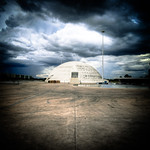




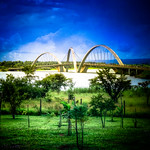


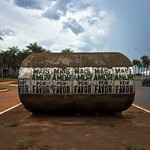
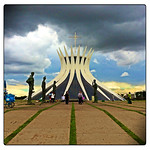

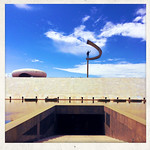
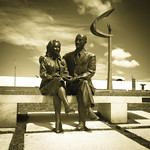




























[…] 7. Brasilia […]